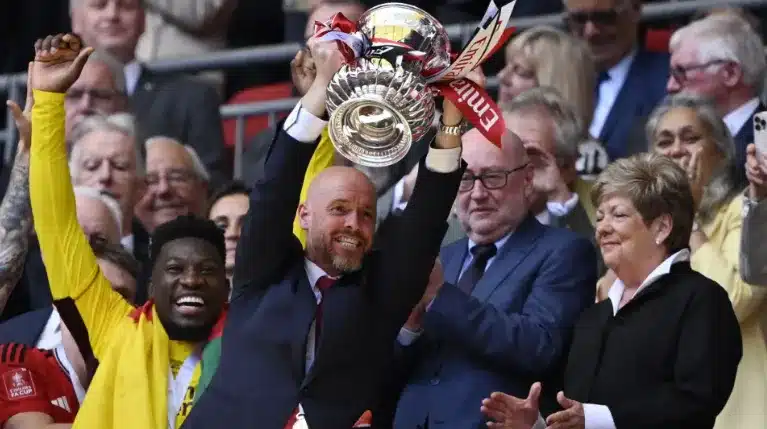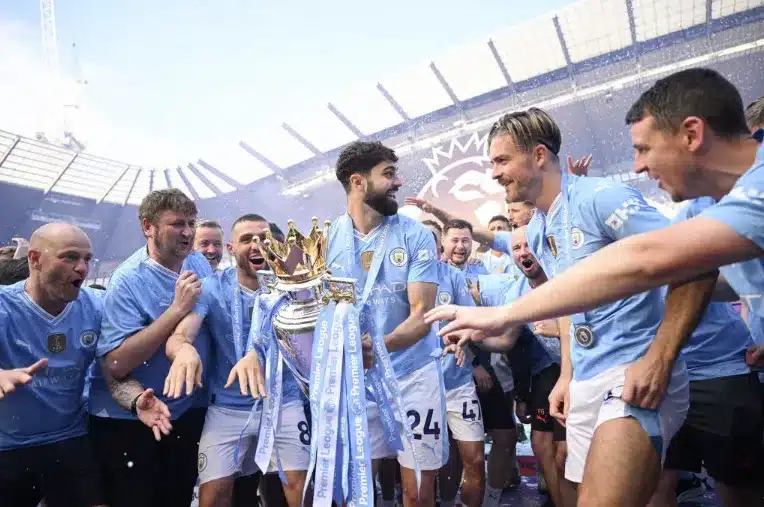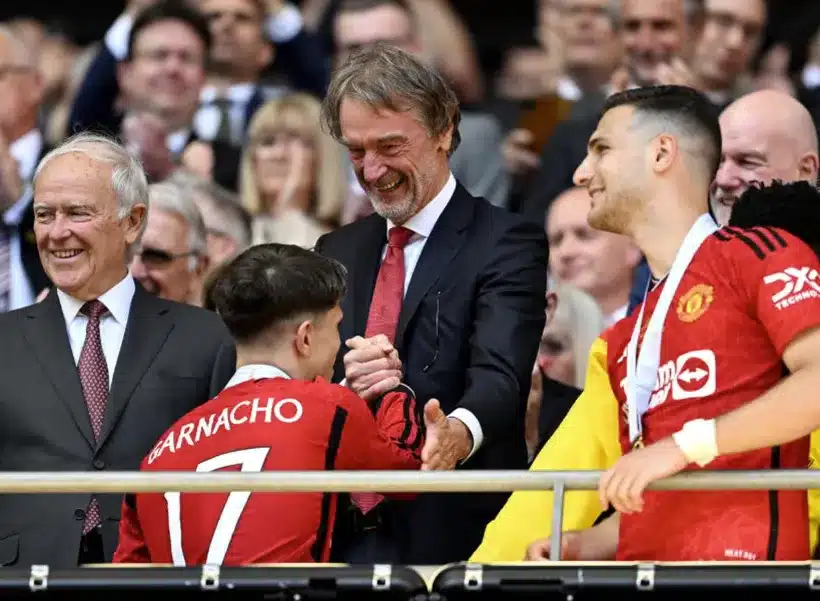The excitement of Manchester United’s dramatic FA Cup victory over rivals Manchester City has been tempered by a complex off-field issue that threatens to derail their European aspirations. While Erik ten Hag’s side secured direct entry to the Europa League group stage with their Wembley triumph, their participation now hinges on UEFA‘s assessment of INEOS’s multi-club ownership structure involving French club Nice. This developing story represents one of the most significant governance challenges in modern football, with implications that could reshape how multi-club operations function across the continent.

Understanding UEFA’s Multi-Club Ownership Regulations
UEFA‘s regulations on multi-club ownership are designed to maintain competitive integrity across European competitions. The fundamental principle states that no individual or legal entity can exert “control or decisive influence” over more than one club participating in the same UEFA tournament. This isn’t merely about share percentages—it’s about influence across four critical areas that Mcw analysts have identified as crucial to fair competition.
The first consideration involves shareholder rights, where UEFA’s Club Financial Control Body considers decisive influence to exist if an entity holds at least 30% of two clubs, or holds at least 10% while being the largest shareholder. Financial support constitutes another criterion, particularly if one club provides financial security to another or accounts for at least 30% of the other club’s operating revenue.
Governance structures represent the third pillar of assessment. UEFA examines whether individuals hold positions in both clubs’ governing bodies, including chief executives, sporting directors, or financial officers. The ability to make key decisions across multiple clubs—including player transfers, budget approvals, and commercial contracts—also falls under this scrutiny.
Finally, player transfer activities between clubs can indicate decisive influence, particularly if three or more players have moved between the clubs or if they share scouting resources and databases. When these criteria are met, UEFA conducts a detailed assessment before making a final determination on competition participation.
The Manchester United and Nice Conundrum
For Manchester United, the issue stems from Sir Jim Ratcliffe’s INEOS group, which controls the club’s football operations while holding a 27.7% ownership stake. The complication arises from INEOS’s majority ownership of OGC Nice, who finished fifth in Ligue 1 and also qualified for the Europa League. While Ratcliffe’s stake in United falls just below the 30% threshold that would automatically trigger concerns, UEFA will closely examine whether INEOS exerts decisive influence through other means.
The roles of key figures like Sir Dave Brailsford, who holds positions at both clubs, will likely be scrutinized. However, United have bolstered their case by appointing individuals like academy director Jason Wilcox and chief executive Omar Berrada who have no involvement with Nice. INEOS has already issued a statement acknowledging the situation, confirming they are “in direct dialogue with UEFA” and expressing confidence about finding “a route forward for next season in Europe.”
United’s FA Cup celebration could be short-lived if UEFA rules against their ownership structure with Nice
Parallel Challenges: Manchester City and Girona
This multi-club ownership issue extends beyond Manchester United. Premier League champions Manchester City face a similar situation with sister club Girona, both of whom have qualified for the Champions League. The City Football Group (CFG), a subsidiary of Abu Dhabi United Group, holds majority ownership of City and 44.3% of Girona, with another 16% owned by Pere Guardiola—brother of City manager Pep Guardiola.
The transfer relationships between these clubs present additional complications. Girona have acquired three players from CFG clubs this season, including Yan Couto and Yangel Herrera directly from Manchester City. Brazilian winger Savio joined from another CFG club, Troyes, with reports indicating he will move to City this summer in a deal arranged months ago. These transactions could indicate decisive influence under UEFA‘s regulations.
Resolution Pathways and Deadline Pressures
Both ownership groups face a June 3 deadline to present UEFA with compliance plans. An independent panel will then evaluate these proposals, with a ruling expected by mid-July before Champions League qualifiers begin. During this evaluation period, United and City are prohibited from conducting any transfer business with their partner clubs.
Several compliance options exist for these multi-club structures. Ownership groups might reduce their stakes in partner clubs to below 30%, as Aston Villa did with Vitoria de Guimaraes last season when they decreased their ownership from 46% to 29%. Alternatively, they could transfer shares to independent third-party investors approved by UEFA, similar to the solution implemented for AC Milan and Toulouse under Red Bird Capital’s ownership.
The most drastic measure would involve establishing completely separate management structures with no overlapping personnel or shared resources. This approach proved successful for Brighton and Union Saint-Gilloise last season, though UEFA still imposed restrictions on player exchanges between the clubs.
Potential Consequences for European Qualifications
If UEFA‘s panel isn’t satisfied with the proposed solutions, only one club from each partnership can compete in the same European competition. The determining factor would be which team finished higher in their domestic league—a criterion that would favor Nice over Manchester United and Manchester City over Girona.
In this scenario, Nice would claim the Europa League spot based on their fifth-place finish in Ligue 1, compared to United’s eighth-place Premier League position. This would relegate United to the Europa Conference League—a significant disappointment for a club of their stature. Similarly, Girona would be demoted to the Europa League, allowing Manchester City to compete in the Champions League alone.

The ripple effects would extend to other clubs. Chelsea would be promoted to the Europa League to replace Manchester United, while Athletic Bilbao would enter the Champions League at Girona’s expense. These potential changes demonstrate how ownership structures can indirectly influence competition opportunities across multiple leagues.
Historical Precedents and Future Implications
This situation isn’t without precedent. Last season, both Aston Villa and Brighton faced similar challenges with their partner clubs in Portugal and Belgium respectively. In both cases, ownership adjustments were made to comply with UEFA regulations, though restrictions on player exchanges remained in place.
The resolution of these cases will set important precedents for the growing trend of multi-club ownership in European football. As more investment groups acquire stakes in multiple clubs across different leagues, UEFA’s framework for ensuring competitive balance will face increasing tests. The decisions made in the coming weeks could establish guidelines that shape football ownership structures for years to come.
Mcw football analyst Mark Thompson notes: “This situation represents a critical juncture for multi-club ownership in European football. UEFA’s decision will either validate the current model or force significant restructuring of these investment portfolios. Either way, it’s a landmark moment for the game’s governance.”
Manchester United’s European Fate Hangs in Balance: UEFA’s Multi-Club Ownership Dilemma
The coming weeks will determine whether Manchester United’s FA Cup triumph translates to Europa League football or an unexpected relegation to the Conference League. While INEOS has expressed confidence in finding a solution, UEFA’s rigorous assessment process leaves no guarantee of approval. The outcome will not only affect United’s season but could redefine how multi-club ownership structures operate within European football’s regulatory framework.
What are your thoughts on multi-club ownership in modern football? Do UEFA’s regulations strike the right balance between investment opportunities and competitive integrity? Share your perspectives in the comments below and follow Mcw for continuing coverage of this developing story.

